In Colonial times, food of all types was often scarce and rather expensive, and settlers made do with what they could get. Although this certainly posed a challenge for the Colonial-era cook, these thrifty housewives were often very creative in how they prepared the ingredients they had on hand, and they devised many recipes for unique desserts as well as main dishes that are still known and enjoyed today. Many of these desserts are now considered to be regional specialties.
Time Frame
The Colonial era in U.S. history generally refers to the period extending from the first European settlements in the 16th century up through the time when the U.S. declared its independence from Great Britain in 1776. When we are speaking of cooking, though, the Colonial-era recipes we most often have access to date from the latter part of this period, as there are few written records from the earliest period of settlement. By the latter part of the 17th century and early to mid-18th century, however, there were enough well-established outposts of civilization that people had the time and leisure to record the new recipes they had been creating.
The Facts
Dessert in Colonial times was served as a status symbol in the houses of the wealthy, as sugar and refined flour were expensive and often in short supply. Dessert was not an everyday thing, but was regarded as more of a "special occasion" or treat or something to serve for company. One notable exception was when foods we consider dessert today were instead served as main dishes: Apple pie, for example, made its appearance at breakfast, lunch and dinner in many New England households, particularly during the winter when hunting and fishing were poor and families had to live off stocks of dried apples left over from harvest time.
Features
Colonial desserts made use of ingredients that were readily available. Chocolate was practically unknown, and ice cream was extremely rare and served only at the houses of the very wealthy as it required not only costly ingredients (ice, cream, sugar) but was also very labor-intensive in the days before the hand-crank freezer was invented (in the mid-19th century). Most Colonial desserts were fruit-based, although some were made of sweetened corn or other vegetables such as squash and pumpkin. Until sugar became readily available in the latter part of the 18th century, molasses and maple syrup were the most commonly used sweeteners.
Geography
Colonial recipes reflect not only the ingredients available in any particular region (corn and apples in New England, molasses and nuts in the southern colonies), but also the ethnic backgrounds of the settlers there. The Pennsylvania Dutch (who were really Germans) brought recipes for the treacly shoo-fly pie when they settled in Pennsylvania; the British colonists who settled New England brought recipes for fruit-based fools, slumps and grunts; and the (real) Dutch who settled in New York brought a recipe for something called "olykoeks" (oily cakes), which later evolved into our modern doughnuts. The Africans who were brought over on slave ships also made contributions from their culinary heritage, and it is to these cooks we owe recipes such as sweet potato cake, sweet potato pie and peanut pie.
Type
A number of Colonial recipes use names we may no longer be familiar with, although the recipes live on in updated forms and under new names. Slumps, grunts and brambles all involved fruit topped with a biscuit dough and baked under a cover to steam the biscuits and fruit. Roly-polys or duffs were made by rolling the fruit up in biscuit dough and wrapping it in a cloth and steaming it. Fools were made of fruit mixed with cream (often whipped cream), and were usually made of blackberries or blueberries. Betties, one of the most popular Colonial dessert recipes, involved layering spiced fruit with bread crumbs. These could be made with any type of fruit, but the apple brown betty is the most familiar version, a recipe that survives even today.
Related Articles

The History of Bread Pudding

Appetizers in Elizabethan Times
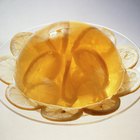
Desserts From the '20s

What Are Rusk Crumbs?

What is the Origin of the Croissant?
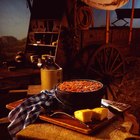
What Is a Cowboy Breakfast?

What Is a Frosted Malted?

The History of Asian Food

The History of Caramel Candy
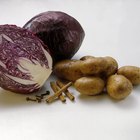
Bohemian Cooking
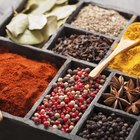
Traditional English Diet

Facts About Italian Cuisine

The History of Nestle Chocolate

About Apache Indian Clothing

How Many Types of Chocolate Are There?
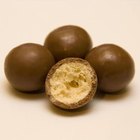
Malted Milk Ball History

History of African Peanut Soup

Ancient Indian Cooking Methods
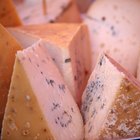
A List of Foods From the Medieval Times

Why Are They Called "S'mores"?